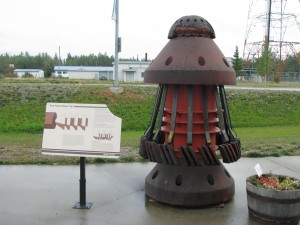
 As part of our month of Sustainability and Science, we’re raising money to help complete Bonehenge. Bonehenge is the skeleton of a Sperm Whale that stranded on Cape Lookout several years ago. Over the last three years, Keith Rittmaster and an army of volunteers from the North Carolina Maritime Museum have been working to re-articulate the skeleton for a display at their Gallants Channel campus.
As part of our month of Sustainability and Science, we’re raising money to help complete Bonehenge. Bonehenge is the skeleton of a Sperm Whale that stranded on Cape Lookout several years ago. Over the last three years, Keith Rittmaster and an army of volunteers from the North Carolina Maritime Museum have been working to re-articulate the skeleton for a display at their Gallants Channel campus.
The protect is a shining example of outreach and community engagement. School groups tour the assembly facility regularly and get a first hand look at the process of reconstructing a full sized whale. Over the course of the project, several new discoveries about sperm whale physiology have been made, including the extreme degree of asymmetry that results in one side of the whale have fewer and smaller bones than the other.
During this month we will match all donations up to $250. There is a widget to your left to make donation through paypal. Even a couple of dollars goes a long way towards making this exhibit a reality.


